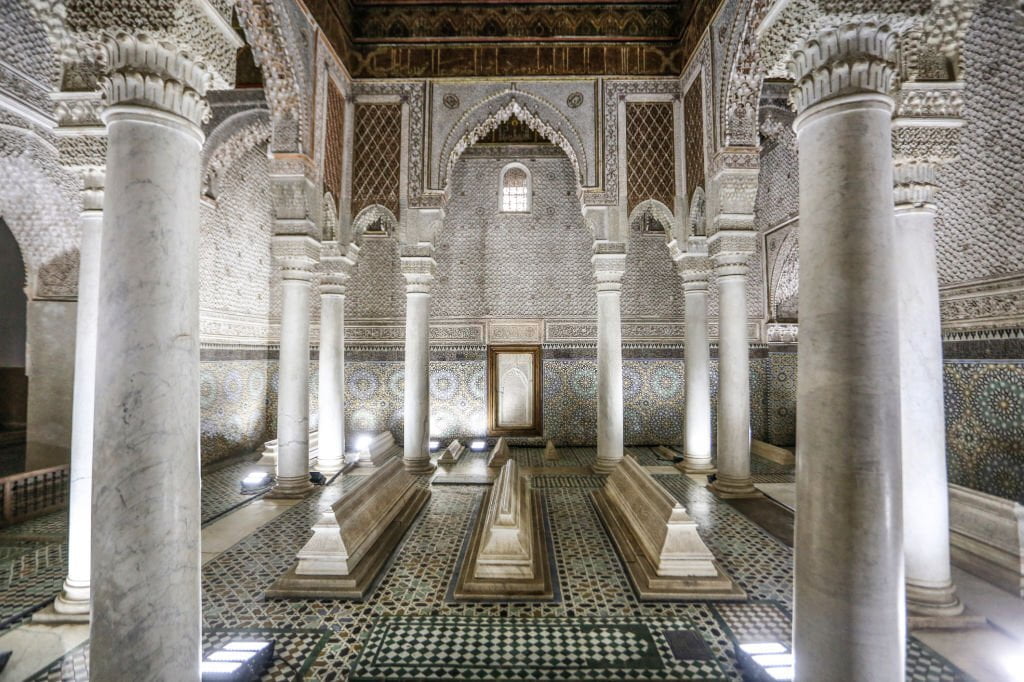The Majestic Saadian Tombs: A Journey into Morocco’s Royal Legacy
In the heart of Marrakech, Morocco, lies a hidden gem that unravels the mystique of the Saadian dynasty – the Saadian Tombs. These sacred burial grounds hold the remains of Sultan Ahmed al-Mansur and his royal family, providing a window into the opulent past of Morocco’s golden age. Join us on a captivating journey as we explore the history, architectural splendor, and cultural significance of the magnificent Saadian Tombs.
Unveiling the History of The Saadian Tombs
A Royal Legacy Revealed
The Saadian Tombs date back to the 16th century, when Sultan Ahmed al-Mansur chose this site as the final resting place for himself and his descendants. Hidden away for centuries, these tombs were rediscovered in 1917 and have since become a significant historical attraction, shedding light on Morocco’s illustrious past.
The Reign of Sultan Ahmed al-Mansur
During the reign of Sultan Ahmed al-Mansur, Morocco experienced a period of remarkable prosperity and cultural flourishing. His rule marked the pinnacle of the Saadian dynasty’s power, with Marrakech serving as the capital of an empire that extended its influence across North Africa.
Architectural Splendor of The Saadian Tombs
Mausoleum of Sultan Ahmed al-Mansur
The mausoleum, the centerpiece of the Saadian Tombs, exudes an air of grandeur and architectural finesse. Intricate tilework, carved cedar wood ceilings, and stucco ornamentation adorn the walls, showcasing the skill of Moroccan craftsmen. The mausoleum’s central chamber houses the tombs of Sultan Ahmed al-Mansur and his family, paying homage to their prestigious lineage.
Hall of Twelve Columns
The Hall of Twelve Columns, an awe-inspiring architectural marvel, leaves visitors in awe of its majestic beauty. The hall derives its name from the twelve intricately carved marble columns supporting the ornate ceiling. Delicate plasterwork, vibrant tile mosaics, and Arabic calligraphy grace the walls, transporting visitors to a bygone era of opulence.
Cultural Significance and Rediscovery of The Saadian Tombs
Rediscovering the Saadian Tombs
After their rediscovery in 1917, the Saadian Tombs underwent extensive restoration to preserve their historical significance. Today, these tombs stand as a symbol of Morocco’s rich heritage and architectural prowess, attracting visitors from around the world.
A Place of Reverence and Pilgrimage
These Tombs hold immense cultural significance for Moroccans, who consider them a sacred site. Locals and visitors alike pay their respects to the departed souls, creating an atmosphere of reverence and solemnity. The tombs have become a pilgrimage site for those seeking a deeper connection with Morocco’s regal past.
The Saadian Tombs offer a remarkable glimpse into the royal legacy of the Saadian dynasty, showcasing the wealth, splendor, and architectural magnificence of Morocco’s golden age. From the opulent mausoleum of Sultan Ahmed al-Mansur to the breathtaking Hall of Twelve Columns, every corner tells a story of a bygone era. As visitors walk through the tombs, they can’t help but be transported back in time, immersing themselves in the rich history and cultural heritage of Morocco. A visit to the Saadian Tombs is not only a feast for the eyes but also an opportunity to pay homage to the legacy of one of Morocco’s most illustrious dynasties.









Leave A Comment